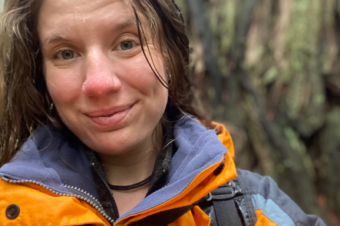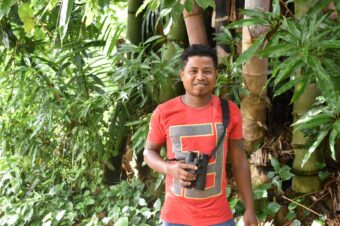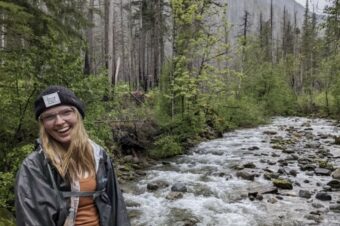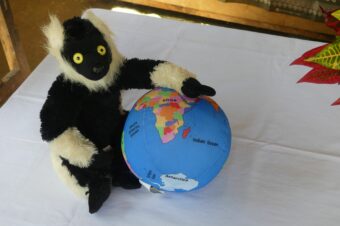Blog from MBP Reforestation Volunteer, Tessa

Lalas, one of MBP’s core nursery team, cut off a piece of Voapaka root as we entered the primary forest of Vatovavy. It was a fairly narrow piece of root, no thicker than a pencil, and he asked me if I wanted a bite. “It makes you strong!” echoed Nivo and Andre, two other core nursery team members. Lalas laughed, and I figured extra strength could only help an early Saturday morning hike in Vatovavy, so I accepted the root and tore off a bite as one would a piece of jerky, handed it back, and proceeded to chew the incredibly bitter bark and fiber for as long as I could stand it. It tasted like mashed aspirin, but Voapaka was the tree that was bringing us to the forest today so it felt like as appropriate a day as ever to eat some.
A mature Voapaka is an especially striking tree to see because of the way it’s roots emerge above ground, making arches and a branch-like fortresses at the tree’s base. Voapaka is one of the forest species we grow in the nursery, and we had been tipped off from the Varecia team that the huge Voapaka 15 meters past the stream was in full fledge fruit and being eaten, and thus pooped, by the Varecia.

For the reforestation team, this meant many seeds to collect and grow, and after three months of winter with very few forest species in fruit, hearing that there are many Voapaka seeds to gather is great news. Upon entering Vatovavy we saw many young Voapaka, close to the forest’s edge, not yet bearing any fruit, and aswe got deeper in we came across more mature trees, though much of the fruit was not yet ripe. One or two Varecia lazed in the branches, and we had to really search the leaf litter for dropped seeds. Since the seeds germinate best once they have gone through the Varecia digestive track, we prioritize the seeds in poop rather than those in fallen fruit. We continued collecting seeds, though much of the fruit was not yet ripe, and a sense of vague disappointment in the number of seeds we were gathering lingered among the group. Maybe we had to give it another week.
After passing the stream though, the barks of the Varecia were prevalent, and no more than 15 meters along we found the feast. Two distinct species of Voapaka towered above, as Varecia leaped in the canopy chowing down on the endless small yellow and green fruits. The understory was littered with seeds, and more continued to drop from the sky as the lemurs digested their breakfast. Armed with latex gloves, we crouched in the understory and filled bags of seeds to take back, scarify, and distribute among all the nurseries. In a few months we will have heaps of Voapaka to plant out in the corridor, hopefully creating future feasting locations.
-Tessa










Leave a Reply